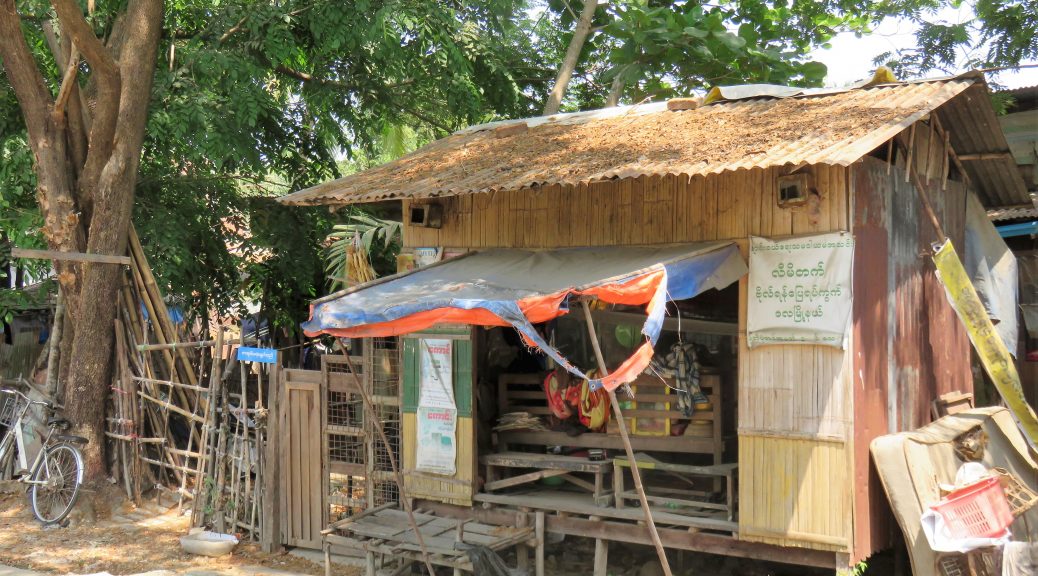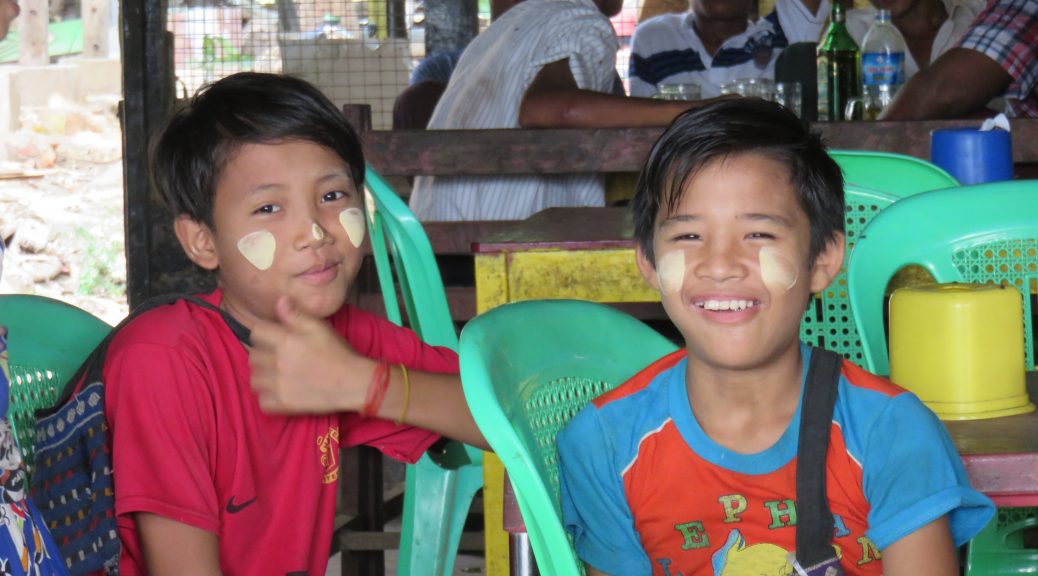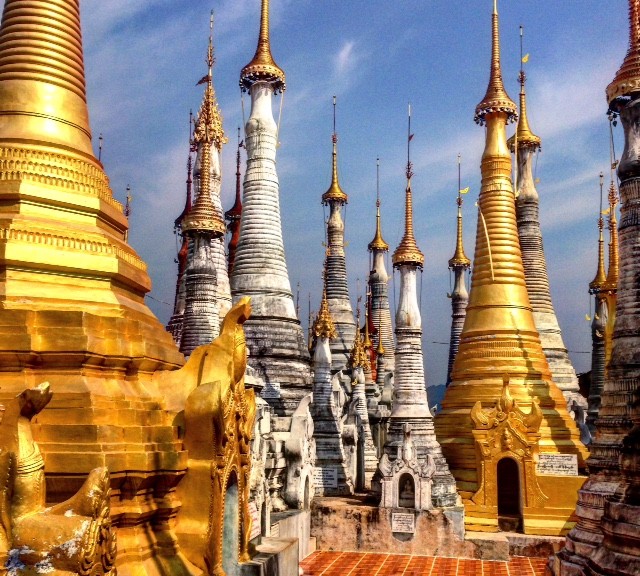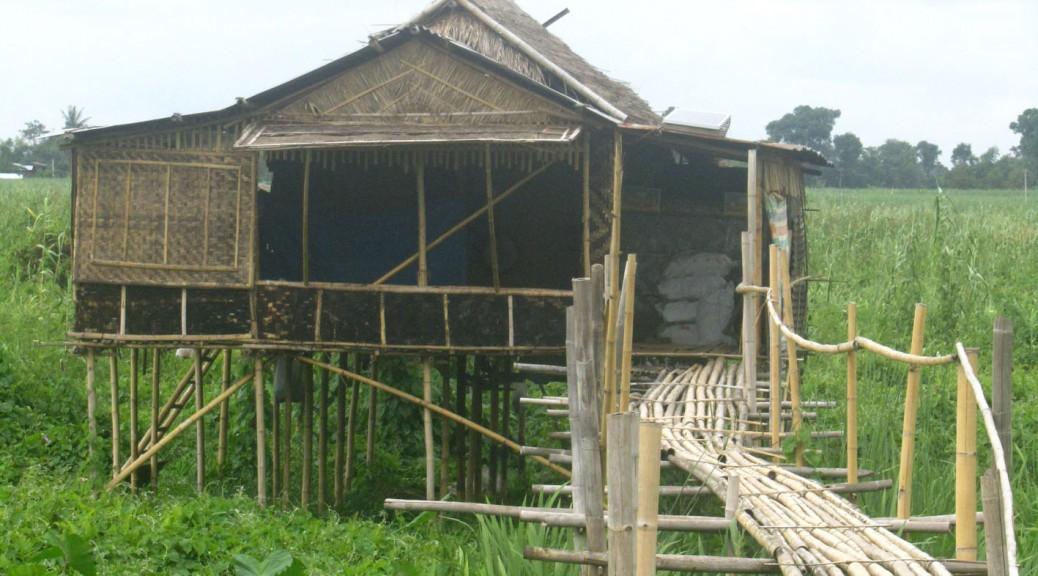Back for another assignment in fascinating Myanmar I am still having difficulty remembering Burmese names. They just don’t look like American names. Take for example, Khun Kyaw Min Htike or how about Mya Zar Li Aye? When I can, I write them down. Otherwise I try to use memory tricks. I remember that Soe Soe Aye is the way a seaman would say, “Yes, I’m feeling just OK.” Got it? The first reader with the correct interpretation of this memory device will receive a free soybean. I am working with a variety of farmers in Myanmar and I can easily get access to a soybean.
Myo Min is my driver. He told me his name means King of the Family. I think he is thrilled with his title. Not so sure about his wife and two teenaged sons though.
One of the farmer groups I am working with is the Myanmar Fruit, Flower, and Vegetable Producers’ Export Association. Their abbreviation is equally challenging: MFFVPEA. My first observation was that the acronym was a bit unwieldy. But they had already shortened it to MFVP by the time I arrived so I had to seek out some other way to add value. Consequently, I decided to teach them basic marketing lessons.
We conducted a brainstorming session to generate new product ideas. One of the farmers volunteer the idea of yam noodles. (Nearly all noodles here are made from rice.) I didn’t understand his accent and I wrote on the board, YUM noodles. Made sense, it sounded tasty. When it came time for the farmers to come up with a marketing slogan for their new yummy noodles, they offered, “slut slut.” I think this might cause English speakers to react with a smirking doubletake – – like my dear readers did just now. I kept a straight face and asked what they had in mind. Apparently, slut slut is the sound a Burmese makes when slurping delicious food. So their slogan works well.
And speaking of slurping sounds, I came across two unusual flavors of snack nuts in a Yangon convenience store. Seaweed and wasabi cashew/macadamia mix. Also almonds and anchovies. Both were pretty good, but not necessarily slut slut.
The association chairman thanked me after the marketing lessons. He said that in the 18 year history of the association they had never received marketing training. They had learned how to irrigate their fields, rotate the crops, harvest and safely store their produce, but never how to market their output. Of course marketing is essential for farmers wanting to move beyond growing and eating. That is mere subsistence farming. Woody Allen once observed that 80% of success in life is just showing up. Seemingly, I showed up at the right time to end their 18 year marketing drought.
I am often asked if I get feedback about the impact of the assignments I have worked on. Not all the time…however two years ago I teamed up with a craft soap maker to train eight village groups how to produce and how to market handmade soap. Of the eight villages, four have developed an ongoing business that provides extra income to the residents. So, there can be a report of some, but not total, success. But to put this in rough perspective, a baseball player hitting .500 would be a superstar. We got to work with superstar villages.
I enjoy wandering around the towns I serve in so that I can observe the way locals live. In a crowded, older section of Yangon I witnessed cords dangling from upper floors down to nearly ground level. Each cord had a butterfly clip attached to the bottom end and a bell affixed at the upper end. Food delivery services will attach an ordered bag of food to the butterfly clip, jiggle the cord so that the bell rings. The resident will then haul up his booty – – and I assume – – send payment back down via the butterfly clip. This would be a great way to get your almonds and anchovies.
Last Tuesday was a national holiday and I had the day off. I crossed the broad Yangon River by ferry to explore the more rural areas south of the crowded city center. On board the ferry was a special seating area for foreigners and monks. I appreciate that I am viewed with as much reverence as a monk in this strongly Buddhist nation, but I thought it too exclusive to sit in that reserved section. I didn’t want to be the ugly American.
At the far side of my ferry trip, the rural side, I began to explore on foot. The underemployed bicycle rickshaw wallahs saw me as a sure customer. Walking in midday sun, 95 degree heat and 95% humidity, is not a common practice. One after another pedaled up beside me to make his pitch. Always polite, I turned them all down. I needed the exercise.
One persistent rickshaw driver struck up a conversation. He asked, “How old are you?” “69” I replied. He seemed confused. Burmese cannot accurately assess the age of a Caucasian. To be fair, I couldn’t guess his age either. I think he was indirectly complimenting me when he said, “My father is 52. He looks old.” But then he paid me the ultimate compliment. “You have a face like a woman.” I guess I will double down on the use of Estee Lauder blush and eye shadow. They seem to be working.





